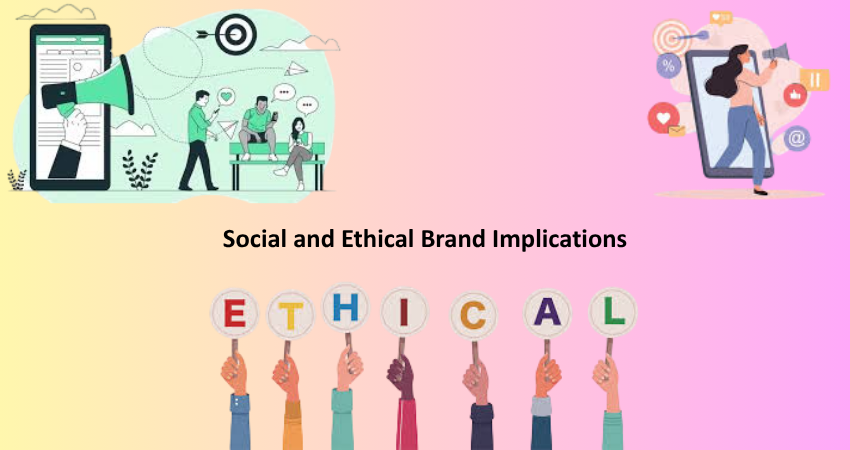
Introduction
In an era in which websites and applications often serve as the first and last points of interaction with any business, accessibility is no longer a “good-to-have”, but rather has become a “must-have”. Sadly, many corporations around the world continue to churn out products that do not factor in the needs of their customers with disabilities. Not only does such an omission render the product unusable for segments of the population, but it actually defeats the very purpose of the brand message itself. An inaccessible design is not just a technical problem or a mistake-it can also become a liability for the brand, alienating audiences and personal reputations and limiting market potential.
Accessibility has to be approached much more widely than just a way of complying with certain laws. There is consideration for ethical reasons, inclusion, customer fidelity, and long-term sustainability. In short, by failing to recognize the need for accessible design, a brand is saying it does not equally matter to those individuals who encounter access barriers. This perception can gradually work against trust, brand equity, and eventually make room for more inclusive competitors. This article will assess the consequential negative effects inaccessible design can impose on a brand—from lost revenue and legal risks to poor user perception and social backlash. We will also examine some solutions that forge accessibility into every decision made on design, thus protecting and enhancing your brand’s integrity.
Accessibility and Brand Perception
Exclusion Signals a Lack of Empathy and Awareness
Experiences go beyond simple inconvenience when users come across websites or applications that are difficult to navigate and interact with. These accessibility barriers create some amount of frustration, exclusion, if not total disengagement, for users with visual, auditory, motor, and cognitive impairments. It is easy to imagine an instance where one would be trying to shop online while being unable to access a product description due to limitations with a screen reader, or unable to fill out a form because of improper keyboard navigation. Such limitations do not only result in a dismal user experience; they also signify that the company behind the platform did not care about including all users in the design process.
It’s the kind of omitted words send a strong yet unintentional message regarding the values of a brand: that inclusivity, or inclusion to be exact, does not matter at all. This can be particularly damaging in the sense of perception in the digital marketplace when consumers align increasingly with brands that reflect their ethics. Today’s consumers expect brands to actually show empathy, diversity and awareness-that is, not just in their marketing, but in everything to the customer’s experience. It is the point where there is a failure in the design when judged from the accessibility perspective; it is the blind spot that users can see and interpret as apathy or incompetence. And when users feel neglected or disrespectful of their views, they seldom give second chances again. Exclusion-based negative perception can easily be spread through word of mouth or social media and can bog a brand down for years in its reputation.
Inaccessible Interfaces Undermine Trust and Reliability
As if emotional alienation wasn’t enough, such unapproachable design also damages a user’s trust in the entire reliability of the brand’s digital presence. Critical functionality, such as navigation menus, login forms, checkout buttons, or media players, failing to work properly for all users, creates doubt regarding what kind of quality the brand represents. Therefore, trust is one of the most valuable currencies of branding, and with every such encounter, poor accessibility chips away it in terms of value. Sometimes, even users without disabilities notice such broken keyboard interaction or non-covering color contrast and relate it as poor development or rushed execution.
In fact, people nowadays are more aware than ever before. Frequent contribution of content on digital best practices that include accessibility by web developers, designers, educationists, and advocates is facilitating this. Companies that ignore these principles are deemed out of touch or irresponsible. Since many of those made above affect usability in a broad spectrum-sound low contrast visibility on screens of mobile devices, or very poor structure making search harder-mistakes become a universal problem rather than just something that has to do with disabled users. As trust deteriorates, customers become less likely to recommend the brand, repurchase its products, or engage with its content. Accessible design is, in fact, a form of crack in the structure of trust, which supports a long-term optimistic acceptance of the brand by consumers.
Legal and Financial Repercussions

Accessibility Lawsuits and Regulatory Consequences
Legal action is fast becoming a common side effect of inaccessible design. Digital accessibility has acquired force of law in many parts of the world, with numerous laws being enacted in varying jurisdictions around the globe-the American with Disabilities Act (ADA) in the United States, the UK Equality Act, and the European Accessibility Act (EAA), in force across the EU. All of these laws dictate that digital service delivery must be accessible to people living with disabilities, and if they are not, the whole legal apparatus is opened-the floodgates to lawsuits, fines, and remediation programs.
Accessibility lawsuits have increased exponentially over the years. The latest addition to the laundered list of “high-profile” cases is the one filed against Domino’s Pizza, the one that included Beyoncé as a defendant, and the most recent whole chapter involving Winn-Dixie. Most of the time, cases involve users who are blind or visually impaired trying to access services by means of screen readers but this malfunction causes them to bump into the barriers of websites that are poorly coded or lack a labeled button, or contain non-HTML compliant elements. The damages involved go far beyond legal fees: even settlements, compliance costs, and PR management costs can be exorbitant and distracting. Further, such lawsuits cast a brand into the public eye; once one comes to be called “non-inclusive” in media or social discourse, it will not be that easy to engineer a retraction.
The Cost of Lost Customers and Market Share
Even apart from the legal ramifications, inaccessible design comes at a heavy financial cost in terms of loss of customers. Over 1 billion people are living with some form of disability worldwide. That is a huge segment of the market that either does not get served or entirely excluded when web and app design do not cater to accessibility. Brands that neglect this group are really shutting the door on millions of possible customers. And accessibility is not beneficial only for those with permanent disabilities; it also helps those with temporary situational constraints, such as using a mobile phone in bright sunlight or accessing a screen only through voice commands.
Market share loss is not just a sudden event. It causes high bounce rates, attrition in engagement metrics, and conversion funnels that can be converted over time. These small leaks are added up. Opting for accessibility gives competitors an upper hand in terms of user satisfaction and brand loyalty. In addition, accessible design often finds itself being mobile-optimized, search-engine-friendly, and usable, meaning that if one design aspect is not implemented properly, the ax on one area has repercussions on all the others. This interconnected influence means that marketing campaigns are less successful, with compromised ROI, when accessibility is non-existent and, ultimately, diminishes digital presence through time. In the long run, ignoring accessibility means cashing out both opportunity cost and real revenue.
Accessibility and Digital Experience Quality
Poor Accessibility Leads to Broken User Journeys
User journeys show the route on which a user passes to achieve some objective-whether it be a purchase, signing for a newsletter, or contacting support. An obstructed website creates a situation where these journeys may be divided or even not possible at all. Imagine going through an e-commerce site with a screen reader and finding that the “Add to Cart” button does not have an accessible label. Or visualize a user with a visual impairment trying to read poorly contrasted text on a financial services page. Each journey interruption spells abandonment and serves to reinforce the message that this particular brand does not care.
These interrupted journeys tarnish the user’s sense of usefulness of the product. Users without permanent disability might temporarily be in an environment that places them at a disadvantage, such as when lighting conditions are low, when the internet connection is poor, or when the screen is too tiny, which simply makes the design inaccessible. Disruption builds frustration and decreases engagement over time. Customers start to wonder whether the brand is worth the time it takes to try to work with it. It does not matter how pretty the design looks if the users cannot navigate it. Accessibility is not an option; it is a pillar of building coherent, trustworthy digital journeys that users can rely on.
Design Inaccessibility Hurts SEO and Content Reach
SEO is the bedrock of digital marketing-and yet another factor that impacts how well your site can rank is accessibility. Most of the best practices for accessibility serve to increase SEO. These semantic HTML tags, alt text for images, proper heading structures, and ARIA labels serve just as much to help search engine robots understand your content as they do assistive technology users. When a site does not observe these features, indexing becomes harder, and the chances of that site appearing in relevant search results diminish-increased emphasis on topics of long-tail searches or those based on API calls.
The search engine rankings can get affected if product pages are in any way lacking in certain functionalities implemented as descriptive title and meta info to enhance their accessibility. A poorly structured page, without headings, will fail to get indexed well in search snippets or mobile-first indexing. Other accessibility features include fast load times, keyboard navigation, and responsive design, all of which positively affect user engagement metrics, dwell time, and bounce rates—the core ranking signals for platforms like Google. An inaccessible design erodes the chances of attracting organic traffic, which in turn decreases discoverability and performance of the content across search, social, and other platforms. If you fail in design from an accessibility point of view, your company may not only lose these users but become invisible to them as well.
Social and Ethical Brand Implications

Damage to Corporate Social Responsibility (CSR)
Consumption is mostly influenced by a growing trend called Corporate Social Responsibility (CSR). It is very much a consumer choice to support a brand that mirrors ethical practices, inclusivity, and community awareness. Inaccessible design stands in direct contradiction to these values. In terms of usability, ignoring an entire segment of the population that has disabilities is not just neglect but creates an additional level of digital inequality. This immediately tarnishes brand credibility and thereby undermines initiatives and campaigns geared toward diversity and inclusion.
In a media environment that is very transparent and always on, the users razz brands that fail to meet their expectations. Accessibility lawsuits are regulars on the social media; user-written online reviews magnify the experience of exclusion. Employees and stakeholders may even air their grievances through the internal channels if accessibility is regarded as an exclusive value. This scenario breeds internal tension that manifests in poor morale and employee turnover. In addition, brands that sell diversity but do not practice inclusion invite accusations of hypocrisy. A company that turns a blind eye on accessibility contradicts its very own CSR messaging, while weakening the hard-hitting narrative that customers and investors usually look for in modern enterprises.
Social Media Backlash and Public Relations Risk
It works really well in creating awareness about brands, yet social media is also a quick public opinion feedback loop. If users ascertain that your digital products are inaccessible, a backlash can ensue-dramatic and swift. Accessibility proponents or influencers may target a brand’s poor accessibility, or disheartened customers may pull others in to tell their own negative experiences. Because they spark discussions about inclusivity and ethics that put the brand in an unflattering light, these tales carry a lot of weight in the mass media. Once a brand has been written off as inaccessible, it becomes extremely difficult for it to dislodge such a claim.
The social backlash consequences are larger than a handful of angry tweets. Journalists tend to pick up the story and create negative press coverage associated with it. Such coverage may influence the perception of an investor, sour the relationship with business partners, or even compromise the marketing efficiencies. Customers who are potential buyers may also choose other companies they perceive to be more inclusive and accountable after witnessing the controversy. Managing such crises typically needs expensive public relations campaigns, forced public apologies, and rushed access overhauls. These are usually reactive measures that hardly restore the complete damage. Rather than waiting to be criticized, a brand should stand up to proactively take a stance on accessibility to protect its reputation and support the entire user base truthfully.
Conclusion
Apart from being a hindrance to usability, inaccessible design is considered a failure of branding with repercussions throughout. Any digital product that excludes people engenders views of apathy, ignorance, and refusal to embrace inclusivity. Such negative perceptions hamper trust, lessen the reputation, and curtail customer reach. The legal risks, loss of revenue, poor SEO, disrupted user journeys, and a few negative ads are simply some of the prices that brands pay for ignoring accessibility.
On the other side of the spectrum are brands that build accessibility into their design. They act as businesses that lead the way, are ethical, and place users first. This results in a closely knit following of customers, a wider reach, and more immunity to social condemnation. Accessibility is not only great: it is also great business. When brands are able to carry the notion of inclusive design through each and every digital experience, they will then use it both to defend and increase their reputation while simultaneously improving the state of the internet for the good of all.